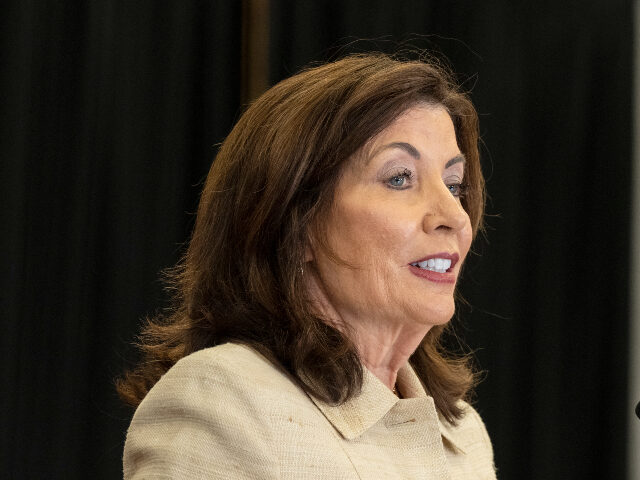New York Goes Nuclear with First Major U.S. Plant in Over a Decade

New York is moving to construct the first major U.S. nuclear facility in more than 15 years.
Gov. Kathy Hochul said she has instructed New York’s public power authority to expand its aging nuclear facilities by adding at least one gigawatt of new energy, which is enough to power about a million homes.
The project will put into practice several of President Donald Trump’s executive orders he signed on May 23 to “usher in a nuclear energy renaissance.”
The New York project offers an early test of Trump’s sweeping executive orders, which call for nothing short of a nuclear revival. From slashing red tape on reactor approvals to fueling AI data centers and military bases with next-generation power, the orders lay out a blueprint to triple U.S. nuclear capacity by 2050. They also aim to jumpstart fuel recycling, boost uranium production at home, and train a new generation of nuclear workers.
While nuclear energy has long been a target of environmentalist scorn, painted as dangerous and outdated, recent years have forced a reckoning. Blackouts, surging electricity prices, and the limitations of wind and solar energy have prompted a growing number of leaders to reevaluate their energy stances.
Nowhere is that shift clearer than in California. In 2020, amid record-breaking heat and rolling blackouts, Governor Gavin Newsom admitted what many green advocates refused to say aloud: renewable energy alone cannot meet demand. “We cannot sacrifice reliability as we move forward in this transition,” Newsom said, after blaming the energy shortfall on low wind output and nightfall halting solar production.
Amazon, Google, Meta, and Microsoft are all throwing their weight behind a global push to triple nuclear capacity by 2050, citing the need for reliable, carbon-free power to meet the soaring energy demands of artificial intelligence and data centers. Amazon has invested over $1 billion in nuclear projects, while Microsoft is moving to restart the shuttered Three Mile Island reactor. Mark Zuckerberg has also endorsed nuclear as the only energy source capable of keeping pace with AI’s explosive growth.
Even Nvidia is getting in on the action. The chipmaker recently invested in TerraPower, a nuclear startup founded by Bill Gates, helping fund construction of the first advanced nuclear plant in United States history. That facility, known as the Natrium reactor, is designed to boost output on demand and integrate with intermittent renewables.
Meanwhile, ordinary consumers across the globe are footing the bill for green energy policies that have failed to deliver. A British study found that the United Kingdom’s green agenda has cost households more than 220 billion pounds since 2006. Spain, which suffered a historic blackout last year, is now relying more on nuclear power and gas just to keep the lights on.
Former President Joe Biden cracked down on gas stoves and ceiling fans in the name of the climate during his presidency. Now the nuclear revival he once quietly endorsed is being seized and accelerated by President Trump, who has made nuclear expansion a pillar of his 2025 energy agenda, signing sweeping executive orders in May to fast-track reactor approvals, encourage domestic uranium mining, and allow military bases and artificial intelligence facilities to tap into new nuclear grids.